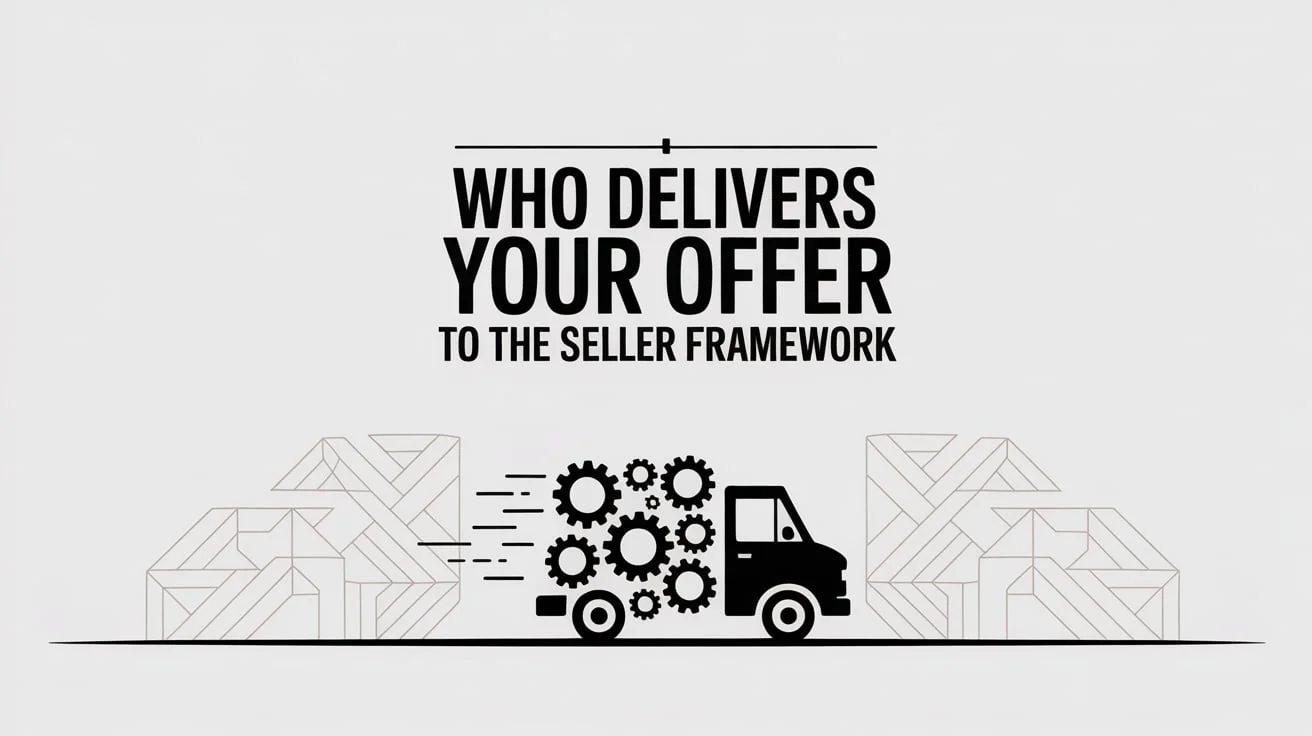Who Delivers Your Offer to the Seller Framework: A Clear Guide for Real Estate Buyers
In real estate, buying a home isn’t just about finding the right property—it’s also about knowing how the offer process works. One question buyers often ask is, “Who delivers your offer to the seller?” Understanding the framework behind offer delivery can make a huge difference in how smoothly (or not) a deal goes through.
This article breaks down the “who delivers your offer to the seller” framework, outlining the parties involved, how delivery happens, and why it matters to both buyers and sellers.
Why Offer Delivery Matters in Real Estate
At first glance, it might seem like a small step in the home-buying process. However, the delivery of the offer can impact negotiations, timelines, and even whether your offer gets considered seriously.
In competitive markets, speed and accuracy are everything. Knowing who’s responsible for delivering your offer—and how it’s done—gives you a strategic edge.
The “Who Delivers Your Offer to the Seller” Framework
Let’s break the process down into three key roles:
1. Buyer’s Agent – The Initial Creator and Sender
The buyer’s real estate agent (or broker) is the one who writes and submits your offer. Once you’ve chosen a property and agreed on the offer terms (price, closing date, contingencies), your agent prepares the official offer document—often called a purchase agreement.
Then, the buyer’s agent is responsible for delivering that offer to the listing agent, who represents the seller.
Key responsibilities include:
-
Drafting the offer correctly
-
Including all required addendums
-
Delivering it promptly via email, fax, or electronic signature platforms like DocuSign
2. Listing Agent (Seller’s Agent) – The Middle Channel
After the buyer’s agent submits the offer, it goes directly to the listing agent, who then presents the offer to the seller.
They don’t just hand it over—they also typically explain the offer’s strengths and weaknesses to the seller. This could include:
-
Financial qualifications of the buyer
-
Flexibility in closing dates
-
Any included contingencies or waivers
The listing agent’s tone and delivery style can influence how seriously a seller takes your offer, which is why choosing the right buyer’s agent is crucial—they help ensure your offer is strong on paper and in presentation.
3. The Seller – The Final Decision Maker
Once the offer lands in the seller’s hands, they can:
-
Accept the offer as-is
-
Reject the offer entirely
-
Submit a counteroffer with revised terms
At this point, the delivery process is complete, and the negotiation phase begins.
Modern Methods of Offer Delivery
In today’s fast-moving market, most offers are delivered electronically. Here’s how that typically happens:
-
Email: The most common and immediate method
-
Transaction Management Platforms: Like Dotloop, SkySlope, or DocuSign
-
Fax (rare, but still used): Especially with older agents or in rural areas
-
In-person (occasionally): Still valued in ultra-high-end deals or when agents want to make a memorable impression
Why This Framework Matters for Buyers
Understanding this framework helps you:
-
Time your offer wisely: Knowing the chain of delivery ensures you’re not submitting too close to deadlines.
-
Respond faster to counteroffers: Offers often come with expiration dates—staying responsive keeps you competitive.
-
Avoid miscommunication: A clear understanding of roles avoids confusion about “who told who what and when.”
Pro Tips to Improve Your Offer’s Delivery
Here’s how you can make your offer stand out—even before negotiations begin:
-
Use a personalized cover letter: It humanizes your offer and can emotionally connect with the seller.
-
Ensure full documentation: Include your pre-approval letter, proof of funds, and disclosures.
-
Work with a responsive agent: Your agent’s speed in sending the offer can be the difference between accepted and rejected.
Frequently Asked Questions: Who Delivers Your Offer to the Seller?
Can a buyer deliver the offer to the seller directly?
Usually, no. Most offers go through the real estate agents involved to ensure legal accuracy and professional negotiation. Direct delivery might violate agency agreements.
How long does it take to deliver an offer to the seller?
Typically within a few hours of finalizing the document. In hot markets, speed is critical.
What if the listing agent is unresponsive?
Your agent can escalate by contacting the broker, resending the offer, or calling to confirm receipt. Persistence often pays off.
Do sellers always see every offer submitted?
Not always. A dishonest listing agent might withhold offers, although this is unethical and, in many places, illegal. That’s why it’s important your agent follows up and confirms delivery.
Is verbal delivery of an offer allowed?
Verbal offers are generally not legally binding. Always insist on written documentation.
Final Thoughts: Why Delivery Shouldn’t Be Overlooked
While who delivers your offer to the seller may seem like a technical detail, it’s a vital piece of the real estate puzzle. The framework ensures your offer is presented properly, on time, and with the right context.
Working with a skilled, proactive agent on both sides of the transaction can smooth the path between you and your new home. And remember—it’s not just about writing a good offer, but making sure it lands exactly where it needs to, when it needs to.
